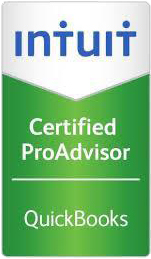At some point, most small business owners will visit a bank or other lending institution to borrow money. Understanding what your bank wants and how to approach them properly can mean the difference between getting a loan for expansion or scrambling to find cash from other sources.
Unfortunately, many business owners fall victim to several common, but potentially destructive myths regarding financing, such as:
- Lenders are eager to provide money to small businesses.
- Banks are willing sources of financing for start-up businesses.
- When it comes to seeking money, the company speaks for itself.
- A bank is a bank, is a bank, and all banks are the same.
- Banks, especially large ones, do not need and do not want the business of a small firm.
Understand the Basic Principles of Banking
It’s vital to present yourself as a trustworthy businessperson, dependable enough to repay borrowed money, and demonstrate that you understand the basic principles of banking. Your chances of receiving a loan will significantly improve if you can see your proposal through a banker’s eyes and appreciate the position that they are coming from.
Banks have a responsibility to government regulators, depositors, and the community in which they reside. While a bank’s cautious perspective may be irritating to a small business owner, it is necessary to keep the depositors’ money safe, the banking regulators happy, and the community’s economic health growing.
Each Banking Institution is Different
Banks differ in the types of financing they make available, interest rates charged, willingness to accept risk, staff expertise, services offered, and their attitude toward small business loans.
Selection of a bank is essentially limited to your choices from the local community. Typically, banks outside of your area of business are not as anxious to make loans to your firm because of the higher costs of checking credit and collecting the loan in the event of default.
Furthermore, a bank will typically not make business loans to any size business unless a checking account or money market account is maintained at that institution. Ultimately your task is to find a business-oriented bank that will provide the financial assistance, expertise, and services your business requires now and is likely to require in the future.
If you need assistance deciding which bank best suits your needs and provides the greatest value for your business operation, don’t hesitate to call the office.
Build Rapport
Building a favorable climate for a loan request should begin long before the funds are needed. The worst possible time to approach a new bank is when your business is in the throes of a financial crisis. Devote time and effort to building a background of information and goodwill with the bank you choose and get to know the loan officer you will be dealing with early on.
Bankers are essentially conservative lenders with an overriding concern for minimizing risk. Logic dictates that this is best accomplished by limiting loans to businesses they know and trust. One way to build rapport and establish trust is to take out small loans, repay them on schedule, and meet all loan agreement requirements in both letter and spirit. By doing so, you gain the banker’s trust and loyalty, and they will consider your business a valued customer and make it easier for you to obtain future financing.
Provide the Information Your Banker Needs to Lend You Money
Lending is the essence of the banking business and making mutually beneficial loans is as crucial to the bank’s success as it is to the small business. Understanding what information a loan officer seeks – and providing the evidence required to ease normal banking concerns – is the most effective approach to getting what is needed.
A sound loan proposal should contain information that expands on the following points:
- What is the specific purpose of the loan?
- Exactly how much money is required?
- What is the exact source of repayment for the loan?
- What evidence is available to substantiate the assumptions that the expected source of repayment is reliable?
- What alternative source of repayment is available if management’s plans fail?
- What business or personal assets, or both, are available to collateralize the loan?
- What evidence is available to substantiate the competence and ability of the management team?
Even a brief examination of these points suggests the need for you to do your homework before making a loan request because an experienced loan officer will ask probing questions about each of them. Failure to anticipate these questions or providing unacceptable answers is damaging evidence that you may not completely understand the business or are incapable of planning for your firm’s needs.
What to Do Before You Apply for a Loan
Write a Business Plan. . Your loan request should be based on and accompanied by a complete business plan. This document is the single most important planning activity that you can perform. A business plan is more than a device for getting financing; it is the vehicle that makes you examine, evaluate, and plan for all aspects of your business. A business plan’s existence proves to your banker that you are doing all the right activities. Once you’ve put the plan together, write a two-page executive summary. You’ll need it if you are asked to send “a quick write-up.”
Have an accountant prepare historical financial statements. You can’t talk about the future without accounting for your past. Internally generated statements are OK, but your bank wants the comfort of knowing an independent expert has verified the information. Also, you must understand your statement and explain how your operation works and how your finances stand up to industry norms and standards.
Line up references. Your banker may want to talk to your suppliers, customers, potential partners, or your team of professionals, among others. When a loan officer asks for permission to contact references, promptly answer with names and numbers; don’t leave them waiting for a week.
Seek Advice from an Experienced Tax and Accounting Professional
Walking into a bank and talking to a loan officer is stressful for just about anyone. Preparation for and a thorough understanding of this evaluation process is essential to minimize the stressful variables and optimize your potential to qualify for the funding you seek. If you’re thinking about taking out a small business loan, don’t hesitate to call with any questions or to request a consultation.




